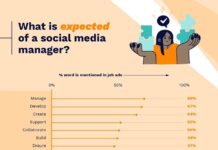Pinterest has been seeing a lot of buzz lately. Traffic has grown very quickly, hitting 11 million visits in the week ending December 17, and catching the attention of brands such as Etsy, Lands End and Real Simple and others. The service is a virtual pinboard: users can create boards around different themes or topics and then pin images to those boards. Other users can follow boards, comment on pinned images or re-pin them to their own boards. It’s highly addictive, fun and visually engaging.
Essentially, Pinterest is about visual content curation. It’s the perfect place to tell an engaging story and get people involved in that story. Which is why it’s a great platform for cause marketers.
Omaha-based PR & Social Media Strategist Jennifer Strauss Windrum has been using Pinterest to engage followers for the cause she founded, WTF (Where’s the Funding) for Lung Cancer?, which is dedicated to raising awareness around lung cancer. Jennifer has created a number of boards related to her cause, and she told me today that she’s been astounded by the level of interest and engagement she’s seen from other users. Check out her boards here: Faces of Lung Cancer (493 followers), WTF Lung Cancer Merchandise (486 followers), SMAC! Sock Monkeys Against Cancer (504 followers). Jennifer personally has 366 followers on Pinterest, so her boards are being discovered and shared by a community that’s broader than that to which she’s personally connected, and she’s amazed at the comments and repins that her boards have generated.
Based on her experience with Pinterest, there are a number of ways that cause marketers can use Pinterest:
- Aggregate content and tools that empower your supporters to spread the word. Jennifer shares resources with WTF? supporters through her blog and on Facebook — but Pinterest gives her the opportunity to collect all of those resources in one central location where supporters can easily find and re-share them.
- Keep the story alive. As you add new pins to a board, those visuals appear in your followers’ streams, generating likes, comments and re-pins, and keeping followers engaged.
- Connect with people around their passion and build the community. People find your content because it’s re-shared by their friends, or by searching on Pinterest around keywords or browsing content channels. Visual images have a deep ability to inspire action and engage.
Collaboration and product development. Jennifer is working on launching a line of Sock Monkeys to raise money for lung cancer research. She created her SMAC! Sock Monkeys Against Cancer board to share ideas and efficiently collaborate on a prototype with her seamstress; that board has now become one of her most popular boards. Another board, Packaging Ideas, has generated helpful tips from other users.
Other cause marketers are catching on. Cause Marketing for Dummies author Joe Waters has started a board collecting samples of different cause marketing campaigns, and Beth Kanter has curated a board of non-profit infographics. Expect to see non-profits and associations of all types start to experiment with Pinterest generate passion for their causes.
Pinterest works for cause marketing because “cause marketing is all about stories,” Jennifer said. “And if your story isn’t visual, you need to find a way to make it visual–and easy for people to share.”


